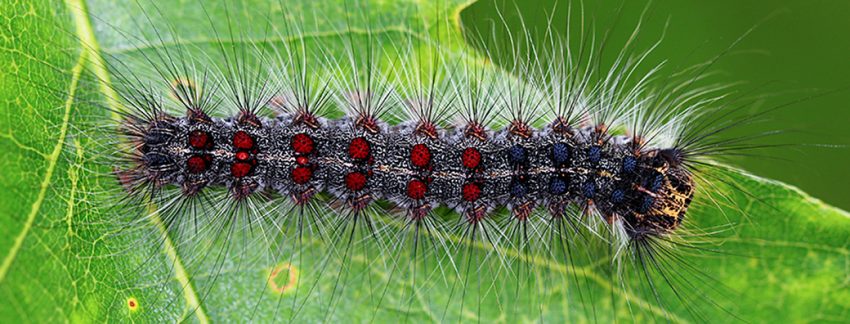Lymantria dispar dispar moths – commonly referred to as European gypsy moths – are a problematic invasive species, especially here in Ontario!
Gypsy Moths Are Always Hungry…
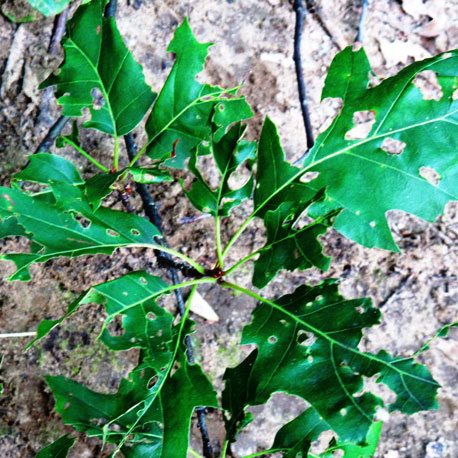
Gypsy moths have an unfortunate and voracious appetite for the leaves and needles on trees. In particular, they love devouring oak, birch and aspen trees. They will also gorge themselves sugar maples, beeches, pines, firs and spruces.
The problem is, when these moths devour the leaves from trees, that makes the trees more susceptible to secondary pests, drought and poor growing conditions. Once gypsy moths have taken hold, the chances of losing the tree altogether are that much greater.
It’s no wonder these moths have the dubious distinction of being listed among the top 100 most destructive invasive species in the world!
What Can We Do To Combat Them?
The best time to combat gypsy moths is when they’re in their egg stage, which runs from August to April.
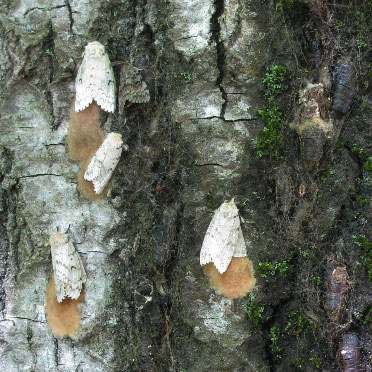
You will typically find egg masses on branches and trunks of trees. However they might turn up in other sheltered locations, like rocks, foliage and vehicles. They are generally yellowish-brown in colour (like a manila envelope), but will sometimes bleach to a lighter colour over the winter.
Remove Those Egg Masses!
When you find these, they’re pretty easy to remove. Just get a container to catch the egg masses in. If you just drop them to the ground, the caterpillars will still be able to emerge in the spring! You’ll also need a flat-edged tool to scrape them off the surface, like a butterknife or a putty knife. Just be careful when you’re removing the egg masses from a tree that you don’t gouge the bark and cause more damage.
The egg masses might be higher up or low to the ground, so look carefully. When you’re done removing the egg masses, you can apply a horticultural oil labeled for LDD/ gypsy moth egg masses, or you can soak them in hot water with soap, bleach or ammonia. This should do a good job of killing the egg masses.
Fighting off the Caterpillars
From mid-April to mid-May, the eggs hatch and the caterpillars emerge. When they’re still very young, you can use biological pesticides to kill them.
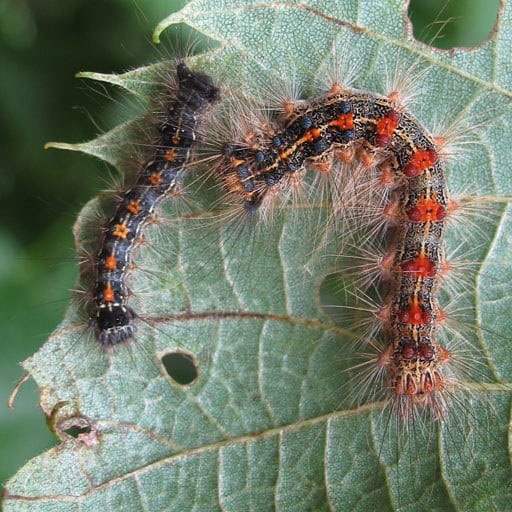
From mid-May to June, the bigger caterpillars will try to move up and down the tree trunks to feed on the leaves. You can trap them using burlap. Wrap a 45 centimetre (or 17 inch) wide strip of burlap around the tree trunk at chest height. Tie a string around the middle of the burlap and fold it down over itself. The caterpillars will crawl under the burlap to get out of the sun, and will be trapped.
At their caterpillar and pupae stage (which goes from June to mid-July), you can crush the moths by hand. Just be sure to wear gloves, as some people find their long hairs to be a skin irritant, and may suffer an allergic reaction.
Can’t Do Much About The Adult Gypsy Moths…
Once they reach the adult moth stage, gypsy moths are relatively short lived. You can’t do much to control the population at that point even though they only survive from July to August. That’s why it’s important to focus on controlling the moths’ population in the other stages. Learn more about gypsy moths in Ontario at Ontario.ca!
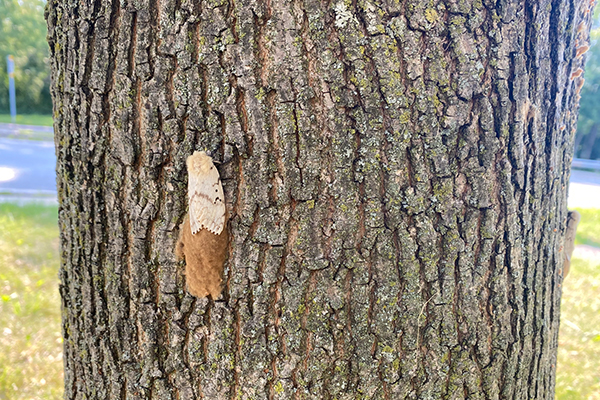
We’re Here to Help
Because these moths can hurt healthy trees and destroy ones that are already hurting, we recommend you help your trees as much as possible by topdressing them with BigYellowBag Black Garden Soil. It will provide plenty of nutrients to keep your trees strong and healthy. If you end up with some damage to your yard from Gypsy moths, rest assured Greenhorizons is here to help. Whether you need sod, soil, seed or fertilizer, Greenhorizons is your local destination. We have a convenient curb-side pick-up system setup, so you can place your order before you arrive, or from the yard!
Want to learn more about gypsy moths? How about other invasive species? Let us know what you want to learn about in the comments below!
